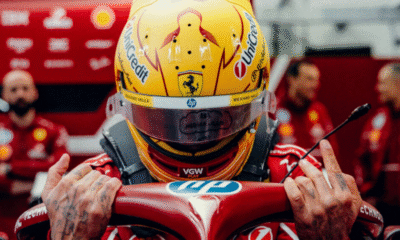Artificial Intelligence
Robots Collapse, Glitch, and Get Stretchered Off in World’s First AI-Powered Football Match
In a jaw-dropping fusion of sports and sci-fi, the world witnessed its first-ever AI-powered humanoid football match this past weekend in Beijing, where not one but two robots had to be stretchered off the field after collapsing mid-game. Billed as a preview to the upcoming World Humanoid Robot Games, this fully autonomous event featured four university teams competing in three-on-three robot soccer matches, with no human intervention. But the game wasn’t all smooth passes and slick moves. Slow-motion collisions, failed kicks, and robotic confusion led to comedy, chaos, and critical system shutdowns.
While each robot was engineered with advanced visual sensors and the ability to stand upright after a fall, some couldn’t recover, requiring human staff to step in and carry them off the pitch on stretchers—a surreal moment that blurred the line between sports injury and system crash.
The event was spearheaded by Booster Robotics, whose CEO Cheng Hao described sports as the ideal testing ground for humanoid robot development. “In the future, we may arrange for robots to play football with humans,” Cheng said. “That means we must ensure the robots are completely safe.”
Each participating university developed its own AI algorithms to control robot perception, movement, formations, and passing strategies. From ball detection to tactical positioning, the robots were left to make every decision in real-time—a bold step toward human-level artificial intelligence.
In the final match, Tsinghua University’s THU Robotics triumphed over China Agricultural University’s Mountain Sea team with a respectable 5–3 scoreline. Spectators, including THU supporters like Mr. Wu, were thrilled not just by the goals but by the evolving capabilities of AI under pressure. “They did really well,” Wu said. “But the Mountain Sea team was also impressive. They brought a lot of surprises.”
Amazon Testing Humanoid Robots for Deliveries with Rivian Vans—The Future of Last-Mile Logistics?
And surprises were in no short supply. Videos showed robots clustered awkwardly around the ball, sometimes toppling over or kicking into empty space. In one dramatic moment, a robot collapsed and failed to reboot, triggering an emergency stretcher team—likely a first in the history of football, robotic or otherwise.
View this post on Instagram
This event follows China’s recent push to integrate AI robots into dynamic environments, with earlier experiments including boxing and marathon racing robots. According to Cheng, competitions like this accelerate development across algorithms, motion control, and safety systems.
Google’s DeepMind has also explored robot football as a benchmark for general AI, showcasing how machine players learn defensive strategies, such as positioning themselves between the ball and goal—a level of intuition still evolving in humanoid robots.
As technology inches closer to integrating AI into physical, social spaces, events like this raise big questions: Can robots play fair? Can they stay safe? And will the next Messi be made of metal?
One thing’s for sure: robot football is no longer a concept—it’s a contact sport.








































